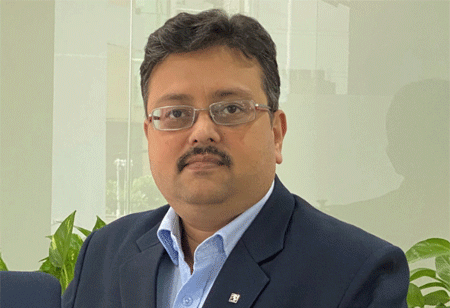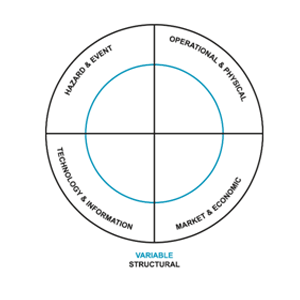
In conversation with Prisila, correspondent, Asia Business Outlook Magazine.Rohit shares his views on how Comprehensive Risk Management improves the stability of small to medium-sized business operations.
1. How can Risk Management help macro and micro businesses prepare for unanticipated future events?
Explain with examples
Comprehensive risk management is a broad strategy for controlling hazards to either foreclose their occurrence or lessen any negative consequences they may have on any business entity irrespective of their nature. This strategy helps in assisting macro and micro firms in preparing for unforeseen future occurrences by giving them access to a well-executed risk management plan that addresses concerns with risk assessment, business continuity, and helps in forming strategies.
Risk management can help micro businesses prepare for unanticipated future events by identifying potential risks and taking proactive steps to mitigate them. For example, Micro businesses can identify potential risks associated with relying on a single product or service and take steps to diversify their offerings. A business that sells only one type of product might consider expanding its product line to reduce its reliance on a single item. This can help to ensure that the business is not overly impacted by changes in demand or supply chain disruptions.
This can ultimately help the business to remain resilient and successful over the long term. If we take China for example, it’s the manufacturing hub for many micro-businesses, and when Covid struck it affected the supply chain of many of these organizations. The disruption happened for many organizations, but the businesses which had been following the China plus one strategy were able to overcome this risk.
Risk management is recognizing issues unique to an organization and creating controls to address them. For example, In the recent wave of layoffs, there is a handful of well-established businesses that are amongst the few companies which are not impacted by the global recession. They have invested their time in creating and strategizing plans in order to mitigate any potential risk their organization may face, like, currently many organizations are facing in this economic slowdown phase. Hence, a risk mitigation plan within the company helps reduce such risks.
So, to accomplish the objectives of the business and prevent any potential adverse effects from unforeseen events, it is crucial for organizations to have comprehensive risk management practices in order.
Micro businesses can identify potential risks associated with relying on a single product or service and take steps to diversify their offerings.
2. Today's small to medium-sized businesses face many potential risks that could jeopardize their ability to provide custom products and services. Please explain how a risk management strategy and a dedicated focus should be used to address those risks.
A comprehensive risk management plan can help every company - irrespective of their size or scale of operations — in overcoming possible threats and risks which may hamper the business. It’s not just the large businesses, but also small-medium sized businesses who are equally prone to these threats and the impact of the risks which equally damage these industries as well.
Taking the example of an Automobile manufacturer, they have a single country which is their biggest market in terms of exports of their automobiles. But due to political or economic instability like a note ban announced by that country’s government, the manufacturer is expected to see a sharp decline in demand for their automobile which in turn will lead to the company downscaling their manufacturing.
All these events will not only eventually affect the workforce working at the manufacturing plants but also all the suppliers associated with that particular manufacturer. To prevent this, the company should have included a comprehensive risk management strategy during their planning phase which would have highlighted the need of creating a contingent plan (like identifying and tapping new markets beforehand) in case of any adversity like the above happens which would have cushioned the impact of the risk on the organization. In today’s time, organizations be it small or medium-sized businesses need to start converging risk management in their strategic and planning level of decision-making.
3. Risk assessment is an organized method of identifying potential risks associated with a specific activity. Please explain how a comprehensive risk assessment goes a step further by categorizing risks into three major categories: high, medium, and low risk.
A comprehensive risk assessment goes one step further by identifying hazards and classifying them into three categories — high, medium, and low. As a result, one should have risk assessment meetings within their company and utilize the help of a risk management team to find possible issues with projects. Our Risk Wheel is recognized by the reputed global security industry body – American Society for Industrial Security (ASIS) which is a comprehensive approach providing a multitude of benefits to different industries. The risk wheels have four quadrants depicting various types of risks as you can see in the below image.

According to the nature of your business and its operations you can take a look at the threats and risks mentioned in the risk wheel which will impact your business. This will help in creating a comprehensive risk mitigation plan for your organizations. For example: in our risk wheel Pandemic was already present but nobody ever thought a pandemic would be a potential risk but then Covid-19 came and disrupted businesses globally. Similarly, how supply chain was disrupted due to the Swiss canal fiasco, Russia-Ukraine war led to global food shortage since they were the largest supplier’s of wheat, corn and barley and lastly how a cyberattack on the AIIMS servers nearly compromised the details of 30-40 million patients of getting leaked.
To not let such instances and threats disrupt your company, one should engage with the right professional risk consultant who’ll work along with your team, be it the security and risk team or leadership, to help in identifying those risks and categorizing their intensity with respect to those risks impact on your business operations and creating a comprehensive mitigation plan for the same.
"Comprehensive risk management is an essential process for small to medium-sized businesses to help improve their stability and minimize the risk of litigation."
4. How Comprehensive Risk Management improves the stability of small to medium-sized business operations while lowering the risk of litigation?
Comprehensive risk management is an essential process for small to medium-sized businesses to help improve their stability and minimize the risk of litigation.
One way comprehensive risk management can improve small to medium-sized businesses’ stability is by identifying and mitigating potential operational risks.
For example, if an organization is regularly conducting supply chain audits for their business and is also practicing partner company audits or vendor audits, who are supplying products or services to their organization it not only helps in verifying the authenticity of those partners or vendors but also helps in keeping a check whether these third parties are being compliant while conducting the business. Businesses also need to conduct thorough due diligence, and individual screening of their employees as well which will help them in preventing negligent hiring, hiring an unqualified candidate with a questionable background that will pose a threat to their organization.
This in turn significantly lowers the risk of litigation for the company. Nowadays, Management of an organization not only needs to be compliant with the laws, rules, and regulations but also needs to practice good governance in their companies to not only lower the risk of litigation but it also helps them to sustain their businesses for a longer period.
For instance, organizations should focus more on creating sustainable products as now governments of many countries are providing levies to those organizations who are manufacturing/producing goods that are sustainable which leaves very less carbon footprints.
Comprehensive risk management can improve the stability of small to medium-sized businesses’ operations by identifying and mitigating potential risks and ensuring compliance with regulations and laws. By reducing the risk of legal disputes and protecting the company's assets, these businesses can ensure their long-term success and avoid costly litigation.
We use cookies to ensure you get the best experience on our website. Read more...